Abstract 1/2019
Table of content
Kazimierz Jamroz, Joanna Żukowska, Lech Michalski – Challenges and directions of developments for road safety in the coming decade in Poland
Krzysztof Goniewicz, Mariusz Goniewicz, Witold Pawłowski Road traffic injuries in Poland
Piotr Kaźmierczak, Joanna Wachnicka – Operational tests of vertical road signs
Adam Tarnowski, Kamila Gąsiorek, Anna Olejniczak-Serowiec, Norbert Maliszewski, Piotr Tomczuk, Marcin Chrzanowicz, Joanna Żukowska, Tomasz Mackun –ROADVERT project – roadside advertisement impact on road safety
Radosław Gryzik, Wojciech Kozłowski – Improvement of pedestrian safety by constructing of active crosswalks for pedestrian
Igor Ruttmar, Aleksandra Zawadzka, Agata Pilipczuk – Safety should be an attraction
Abstracts
Kazimierz Jamroz, Joanna Żukowska, Lech Michalski
Challenges and directions of developments for road safety in the coming decade in Poland
Abstract: In Poland, we still observe a downward trend in the number of fatalities in road accidents, although the rate of reducing the threat of fatal accidents is declining. Considering external conditions (mainly the activities of the European Commission) implementation of the Zero Vision assumptions in the EU member states up to 2050, poor results of the 4th Road Safety Program (RSP) and preparation of assumptions for the new 5th RSP for 2021-2030, it is necessary to determine Polish situation , to identify external and internal conditions and to define directions of program activities for the next decade. The aim of the article is to describe level of the Vision Zero implementation and current road safety programs in the light of three decades of developments in this area, to identify external and internal conditions that enable or threaten the implementation of measures for road safety and to define directions of actions and assumptions for the preparation of national and regional road safety programs for the next decade. Also the characteristics and assessment of serious road accidents with fatalities and seriously injured in Poland and the indication of measures reducing their number is presented in the article.
Key words: road safety, Vision Zero, National Road Safety Program (RSP), evaluation of program RSP,
Krzysztof Goniewicz, Mariusz Goniewicz, Witold Pawłowski
Road traffic injuries in Poland
Abstract: The research aims at assessing the prevalence, effects as well as risk factors for motor vehicle traffic accidents (MVA) in year’s 2005 to 2014 in Poland. The research is based on the analysis of dense data contained in the reports of Prevention and Analysis Office of Road Traffic Headquarters of Police; National Road Safety Program – GAMBIT 2005, National Road Safety Program 2013 to 2020; Strategy for the Efficient State in 2020 as well as few publications depicting the main problems of road safety in Poland. In Poland, road accidents are the first cause of death in case of men up to 44 years. The most common, permanently occurring causes of road accidents include failure to comply with the rules of the road traffic, low driving skills combined with a poor assessment of the situation on the road, lack of adequate road infrastructure as well as poor technical conditions of vehicles. Despite the variety of measures undertaken to improve safety on Polish roads, the number of fatalities and injuries resulting from motor vehicle accidents is still considerable, and the losses incurred by Polish society are still substantial. It is necessary to continue multidirectional actions to improve safety on the roads in Poland, resulting in a systematic increase in the level of road traffic security.
Key words : road traffic accidents (RTA), mortality rates, injury rates
Piotr Kaźmierczak, Joanna Wachnicka
Operational tests of vertical road signs
Abstract: Vertical road signs are one of traffic organization means, serving the efficient and safe driving of drivers as well as other road users. However, in order to provide their effective informative or warning function, they must have their functional features, such as the reflexivity coefficient and color, as long as possible. This article presents the results of laboratory tests on artificial aging of reflective foils used on vertical road signs, as well as the results of field tests carried out on signs disassembled after years of operation. Two types of most commonly foils on Polish roads have been tested. Thanks to the conducted analyzes, the predicted vertical marking length of life was determined. These results can help road managers in better maintaining road infrastructure and ensurement the replacement of vertical signs when they don’t meet requirements anymore.
Key words: road signs, vertical road signs, reflective foils
Adam Tarnowski, Kamila Gąsiorek, Anna Olejniczak-Serowiec, Norbert Maliszewski, Piotr Tomczuk, Marcin Chrzanowicz, Joanna Żukowska, Tomasz Mackun
ROADVERT project – roadside advertisement impact on road safety
Abstract: Placing the roadside advertisements may cause negative consequences for the road traffic safety. Polish law system lacks clear guidelines upon which road users’ behaviour influence assessment on each outdoor advertisement could be made. In order to develop appropriate rules, the ROADVERT project was created. An objective multicriteria analysis of various types of advertising media noticeable from the road has been performed in the framework of the project. This analysis refers to the technical assessment (verification of geometrical and light parameters) and location conditions. The factors that strongly affect traffic safety, related to the content of advertising mediums and the way it is displayed, as well as individual predispositions of drivers determining “sensitivity” to the impact of advertising will also be analyzed. On the basis of analyzes and conducted research in real and simulation conditions, a set of recommendations and an innovative, comprehensive methodology for the evaluation of advertising mediums in the aspect of impact on road safety will be designed. Additionally, a set of dedicated tools will be designed and provided to the General Directorate for National Roads and Motorways and other stakeholders, so as to enable the efficient management of road traffic safety in respect to the growing advertising industry.
Key words: roadside advertisements, road safety, distracted driving, cognitive processes
Radosław Gryzik, Wojciech Kozłowski
Improvement of pedestrian safety by constructing of active crosswalks for pedestrian
Abstract: Pedestrians are the most exposed group of users of the roads who are directly endangered by the contact with vehicles. Almost 50% accidents occurred with pedestrians is caused by the wrong behavior of the driver towards the pedestrian. 70 % of these accidents occur directly on the crosswalk and they are resulted with more than 200 fatal victims every year. Each self-government strives to eliminate accidents with fatal victims within the area of its region voivodship, municipality or community. Since many years pedestrians have been main sufferers of the vehicular traffic and most of them losing their lives on the crosswalks, which are supposed to be the safest location to cross the street with the flow of traffic. According to the latest enumeration data the unit cost of the fatal victim is 2 052 518 PLN, the unit cost of a seriously injured is 2 323 299 PLN, and the unit cost of a slightly injured in the accident is 26 860 PLN. The enumeration data presented above show that the cost of construction even thirty the most innovative crosswalks that would contribute to save at least one life is – in terms of cost aspect – a very good investment (if you could convert safety and human life and health into money). The article aims to analyze an impact of usage the active crosswalks for pedestrians as an improvement for pedestrians’ safety. The article includes exemplary design solutions from technical point of view as well as the design guidelines for the crosswalks location.
Key words: road safety, pedestrians, crosswalks for pedestrian
Igor Ruttmar, Aleksandra Zawadzka, Agata Pilipczuk
Safety should be an attraction
Abstract: According to the resourses of Aurora (a company developing autonomous vehicles), every minute an average of 2.4 persons die on the roads in the world. It’s almost 3.5 thousand people a day and over 1.2 million a year. What is the most common cause of road accidents and what can be done to reduce the impact of this factor and reduce the number of fatalities on the roads? The aim of the article is to analyze the safety of road transport against other modes of transport, such as air or rail transport. The issue of human error will be discussed as a factor that at least partially causes almost 90% of road accidents. Measures to increase road safety, both from the legislators (regulations, requirements, promotion of collective public transport, reduction of individual car traffic in city centers), automotive industry (airbags, ABS system, tires, advanced safety systems and driver support) as well as road builders (gradeline layout and roads in the plan, collision-free intersections, road markings, modern barriers, ensuring adequate parameters of the wearing course) is discussed in the article. What is the future of roads in terms of safety? The topic of innovative technologies and solutions reducing the risk of accidents on roads (autonomous vehicles or collisionless tunnels “Loop” by Elon Musk) is presented. The way we are approaching the future should lead to a world where people do not lose their lives in traffic jams nor accidents.
Key words: road safety, transport safety, measures to improve road safety, accident risk

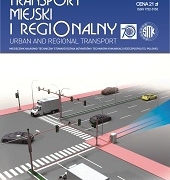 SITK RP
SITK RP 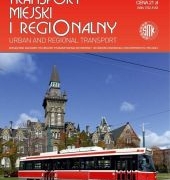 SITK RP
SITK RP 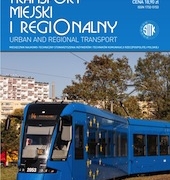 SITK RP
SITK RP 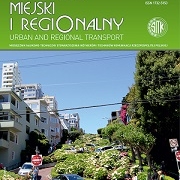
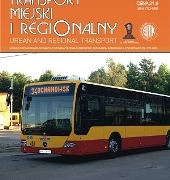 SITK RP
SITK RP 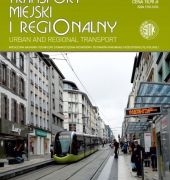 SITK RP
SITK RP 

